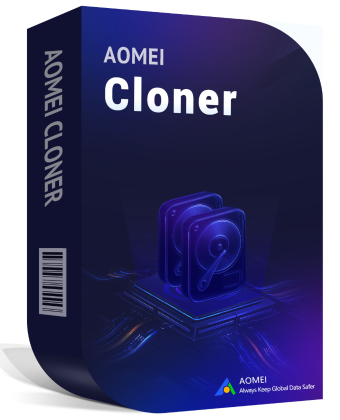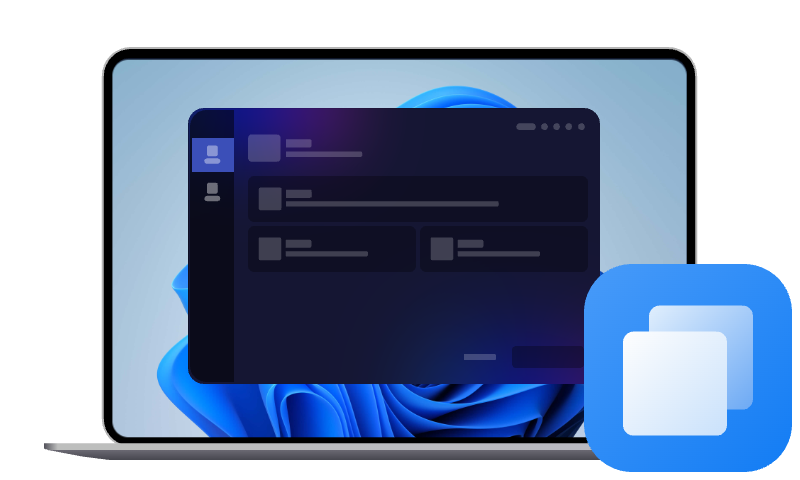Acronis Disk Director Cloning: Full Guide & Best Alternative
Need a complete guide for Acronis Disk Director cloning a disk? Read this post to get one, and we'll also provide an alternative disk cloning tool, AOMEI Cloner, to clone your hard drive smoothly without any issues.
Acronis Disk Director is a robust partition management tool designed for partition organization and management. It offers features like disk partition resizing, merging, splitting, copying, and cloning disks to other drives, either internal or external. In this guide, we will show you how to perform Acronis Disk Director cloning step-by-step and offer a more professional and easy-to-use cloning tool for disk cloning.
Preparations for Acronis Disk Director Cloning
Before diving into the process of Acronis Disk Director cloning disk, proper preparations are crucial to ensure a smooth disk clone. Here's what you need to do:
👉 System requirements: Windows OS (from Windows XP to Windows 10, and various Windows Server editions).
👉 Disk requirement: It can only clone basic MBR disks, not for GPT disks; and it does not support a single partition clone or dynamic disk clone.
👉 Necessary tools: A SATA-to-USB adapter or enclosure to connect the target drive.
👉 Backup important data: Creating a backup for your crucial files against unexpected failures.
👉 Check disk: Run disk check tools to ensure both source and destination drives are healthy. And make sure that the target drive has enough space to store all the data from the source disk.
How to Clone a Disk with Acronis Disk Director
Now, let's take a look at how to let Acronis Disk Director clone HDD to SSD.
Step 1. Get Acronis Disc Director free download on your computer, and open it.
Step 2. Right-click the drive you want to clone and select Clone basic disk from the drop-down menu.
Step 3. In the Select a disk as target for the cloning operation window, choose a basic disk as the target for the cloning operation.
Step 4. On the Select a cloning method screen, choose a cloning method and check advanced options:
- As is - The information in the source disk will be exactly transferred to the target disk. If the destination disk is the same size or even larger, you can transfer all information to the destination disk as it is stored on the source disk. When cloning to a larger destination disk, the remaining space will become unallocated.
- Use proportional volume resizing - It will automatically increase or decrease the volume size depending on the target disk size to make sure there is no unallocated space on the target disk.
- Copy NT signature is used to copy the signature (the record that is saved in the disk's master boot record and uniquely identifies the disk) from the source disk to the target disk.
Step 4. Click on Finish > Commit pending operations to start the cloning operation.
Disadvantages for Acronis Disk Director Cloning:
✖ Complex interface for beginners - Its interface can be overwhelming for novice users, with technical jargon, confusing options, and multiple steps involved in cloning.
✖ Limited cloning options - Except for limited support for basic MBR disk clone only, it does not offer straightforward system cloning and partition cloning, which adds complexity and potential for error.
✖ Boot issues after cloning - Some users have reported boot failures after performing a clone, particularly when migrating between different hardware configurations.
Bonus: Best Acronis Disk Director Alternative
If you are looking for an Acronis Disk Director alternative for a seamless cloning experience, you can try AOMEI Cloner to clone drives without losing data easily and quickly.
This fully-featured cloning software comes with 3 cloning options - Disk Clone, System Clone, and Partition Clone. Additionally, it allows you to create bootable media for hard drive cloning with a bootable USB.

- Copy entire disk or transfer only OS to a new hard drive without reinstalling Windows.
- Support MBR & GPT disk cloning without converting the partition style.
- Supports cloning HDD to SSD, HDD to HDD, SSD to M.2 SSD, as well as cloning partitions, with SSD Alignment to boost the performance of the target SSD.
- Support small disk cloning to large disk or large hard disk cloning to small hard disk.
- Clone hard disk with bad sectors, skipping error areas to ensure a secure boot.
To perform a disk clone using AOMEI Cloner, free download it on your computer, click Clone > Disk Clone, and follow the wizard to begin the cloning process. Or, you could try System Clone to transfer only the OS.
FAQs about Acronis Disk Director Cloning Disk
#1. What is Acronis Disk Director used for?
Acronis Disk Director is a comprehensive disk management tool used for partition management, volume recovery, and disk cloning.
#2. Is Acronis Disk Director free?
Unfortunately, no. While there is a trial version, the full features, including cloning, require purchasing a license.
#3. Is Acronis Disk Director still available?
No, Acronis has discontinued sales and support for Acronis Disk Director, focusing instead on their Cyber Protect suite and True Image. However, existing users can still use the software as it will continue to function as designed.
Summary
In this guide, we have presented how to perform Acronis Disk Director cloning if you are looking forward to upgrading your hard drive or copying your system drive for backup. However, it also has some flaws that must be mentioned, like relatively complex operation and limited cloning options.
For users who desire a simpler and faster cloning alternative, AOMEI Cloner is a standout choice. With its robust features and intuitive design, you can clone boot drive to HDD/SSD, either GPT or MBR disks, clone only Windows to new drive, and clone SSD, external hard drive, etc., without data loss.

